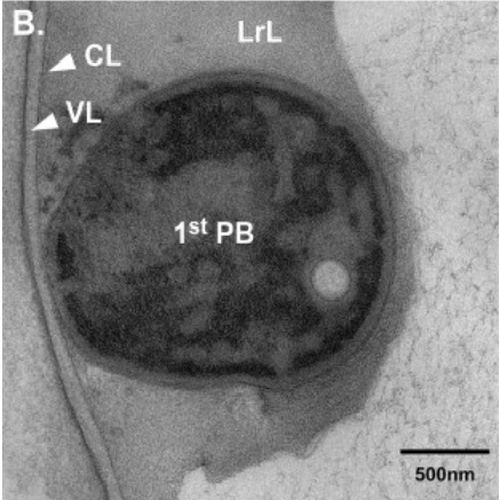Two cytochrome P450s in Caenorhabditis elegans are essential for the organization of eggshell, correct execution of meiosis and the polarization of embryo.
The role of lipids in the process of embryonic development of Caenorhabditis elegans is still poorly understood. Cytochrome P450s, a class of lipid-modifying enzymes, are good candidates to be involved in the production or degradation of lipids essential for development. We investigated two highly similar cytochrome P450s in C. elegans, cyp-31A2 and cyp-31A3, that are homologs of the gene responsible for Bietti crystalline corneoretinal dystrophy in humans. Depletion of both cytochromes either by RNAi or using a double deletion mutant, led to the failure of establishing the correct polarity of the embryo and to complete the extrusion of the polar bodies during meiosis. In addition, the egg became osmotic sensitive and permeable to dyes. The phenotype of cyp-31A2 or cyp-31A3 is very similar to a class of mutants that have polarization and osmotic defects (POD), thus the genes were renamed to pod-7 and pod-8, respectively. Electron microscopic analysis demonstrated that the activity of pod-7/pod-8 is crucial for the proper assembly of the eggshell and, in particular, for the production of its lipid-rich layer. Using a complementation with lipid extracts, we show that POD-7/POD-8 function together with a NADPH cytochrome P450 reductase, coded by emb-8, and are involved in the production of lipid(s) required for eggshell formation.

- Mech. Dev. 2009 May-Jun;126(5-6):382-93
- 2009
- Developmental Biology
- 19368796
- PubMed
Enabled by:
